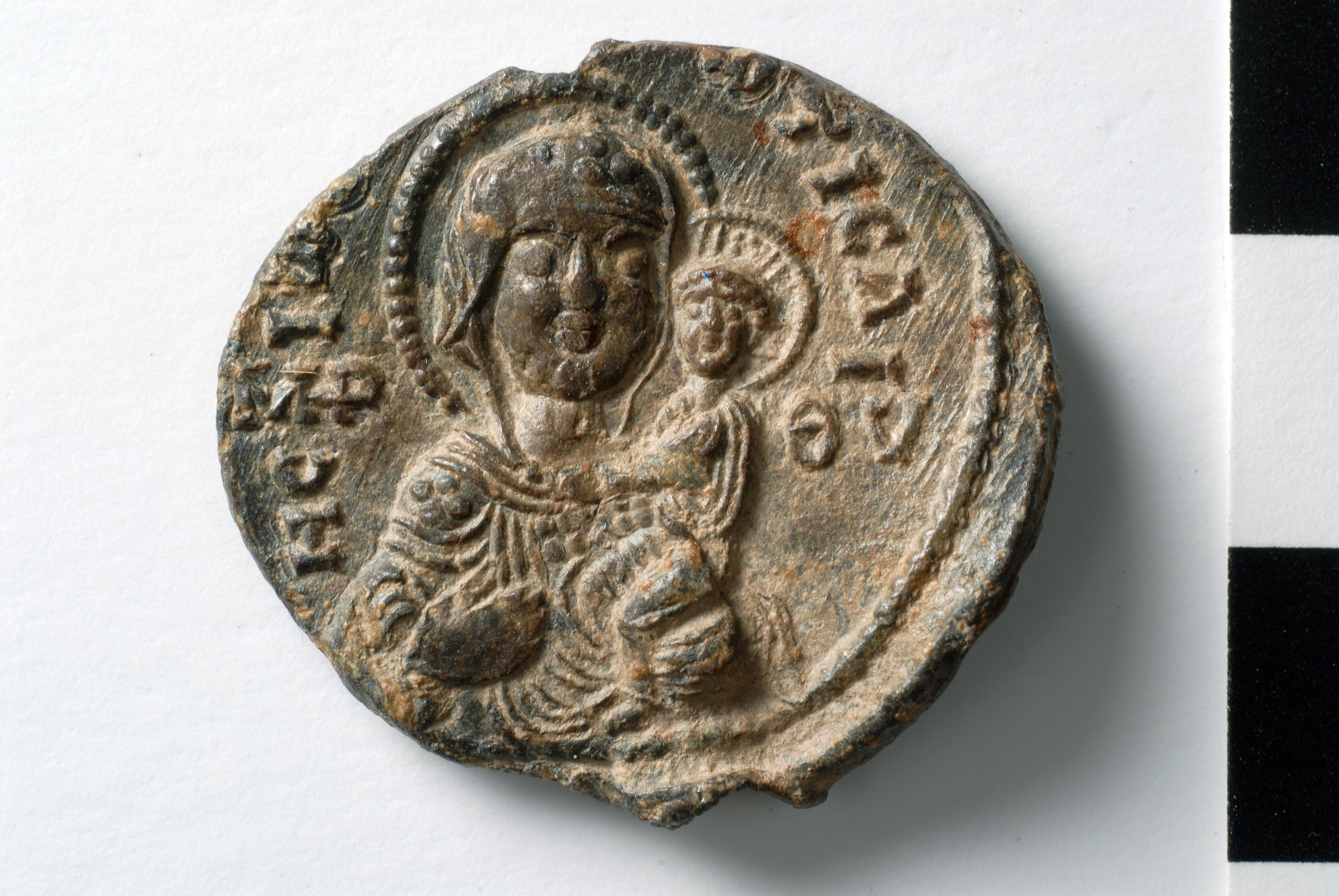Constantine Kabasilas, bishop of Grebenon (twelfth century)
Obverse
Bust of the Virgin holding Christ. Sigla: ̅ΘΥ̅ : Μήτηρ Θεοῦ. Circular inscription along the circumference: ΗΣΣ....ΤΙΣΑ. See the commentary for a possible explanation of this epithet. Border of dots.
Obverse
Bust of the Virgin holding Christ. Sigla: ̅ΘΥ̅ : Μήτηρ Θεοῦ. Circular inscription along the circumference: ΗΣΣ....ΤΙΣΑ. See the commentary for a possible explanation of this epithet. Border of dots.
Reverse
Inscription of seven lines. Border of dots.
.ΚΕΠΟΙΣ
ΝΓΝΕΤΟΝ
ΕΝΟΥΠΟΙΜΕΝ
ΚΝΝΤΙ
ΝΟΝΜΕΚ
ΣΙΛΝΕΚΓΕ
ΝΟΥΣ
Σκέποις, Πάναγνε, τὸν Γρεβενοῦ ποιμένα Κωνσταντῖνόν με Καβάσιλαν ἐκ γένους.
| Accession number | BZS.1958.106.256 |
|---|---|
| Diameter | 26.0 mm |
| Previous Editions | DO Seals 2, no. 15.1. |
Translation
Σκέποις, Πάναγνε, τὸν Γρεβενοῦ ποιμένα Κωνσταντῖνόν με Καβάσιλαν ἐκ γένους.
May you, all holy One, watch over me, the bishop of Grebena Constantine, Kabasilas by descent.
Bibliography
- Catalogue of the Byzantine Seals at Dumbarton Oaks and at the Fogg Museum of Art, Vol. 2: South of the Balkans, the Islands, South of Asia Minor (Open in Zotero)
- Le Corpus des sceaux de l’empire byzantin (Open in Zotero)
- La géographie ecclésiastique de l’empire byzantin, Vol. 1, Le siège de Constantinople et le patriarcat oecuménique, Pt. 3, Les églises et les monastères (Open in Zotero)
- Grammatik der byzantinischen Chroniken (Open in Zotero)
- Corpus der byzantinischen Siegel mit metrischen Legenden, Vol. 2, Siegellegenden von Ny bis inklusive Sphragis (Open in Zotero)

Commentary
The reverse inscription consists of two twelve syllable verses. Laurent rightly surmised that the last letter on line 2 (rev.) is a ligature of Γ and Ρ.
In the circular inscription of the obverse, four to five letters were left beyond the field. As the letter after the Ω at left is curved and should be read as Σ (or, with less probability, Θ), the reading, Σωσθενιώτισσα, may be proposed, that is, of Sosthenion in Constantinople, where a church of the Virgin is attested (Janin, Eglises, 231-32). The ending compares with Στυπειώτης or Μοναστηριώτης (Psaltes, Grammatik, 250-51).
The bishop of Grebenon Constantine Kabasilas is not known from other sources, and we find no valid reason to identify him with other members of the Kabasilas family named Constantine who occupied other episcopal sees (an attempt in this direction has been made by Laurent, Corpus V/2, 338).
The bishopric of Grebenon (at present-day Grebena, some 35 miles southwest of Kozani), a suffragan of the archbishopric of Ohrid, appears to have been established in the 12th century, about the year 1100. See Laurent, Corpus V/2, 337.